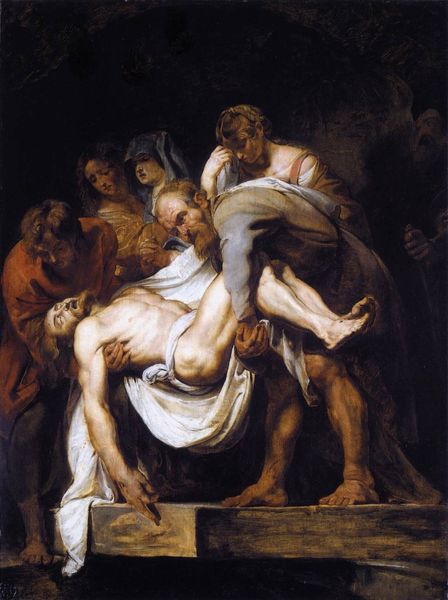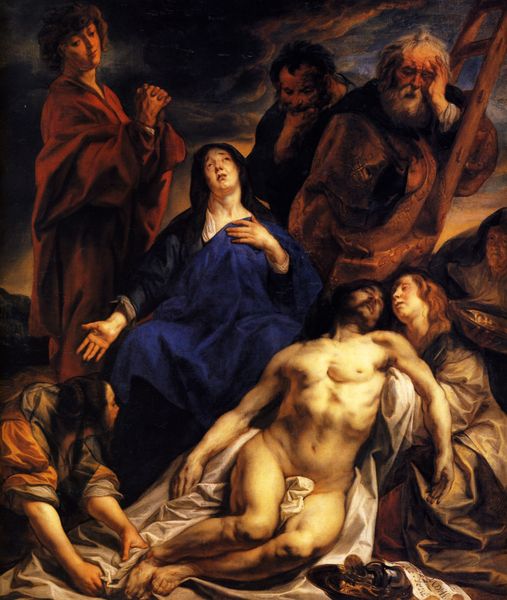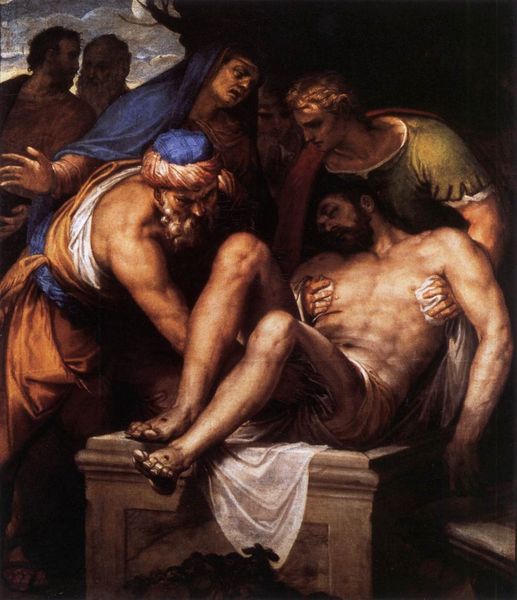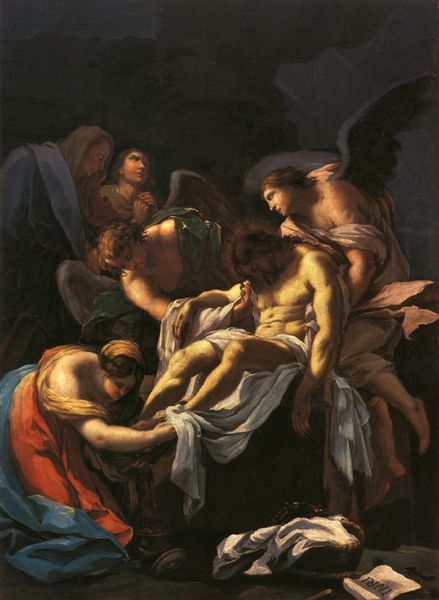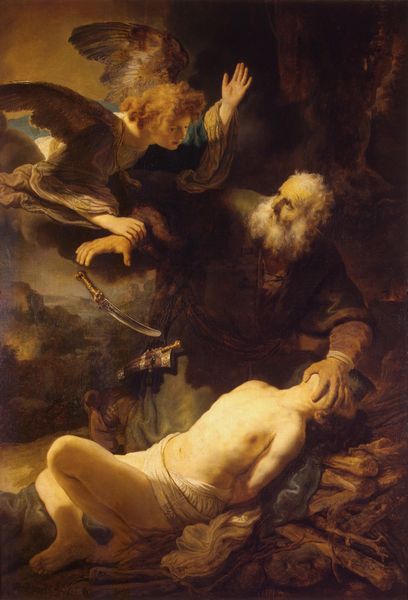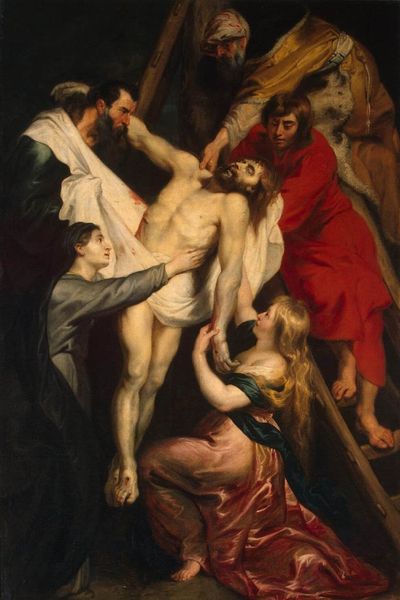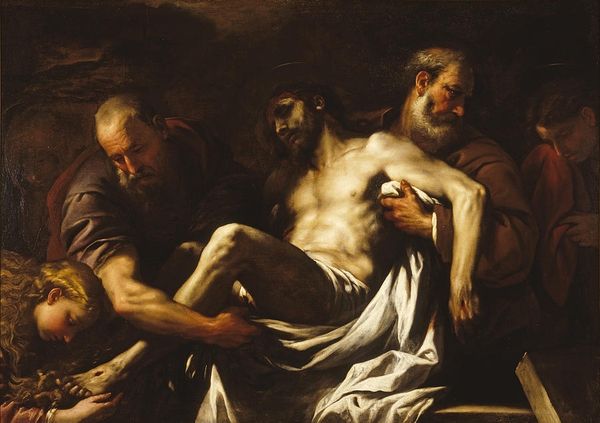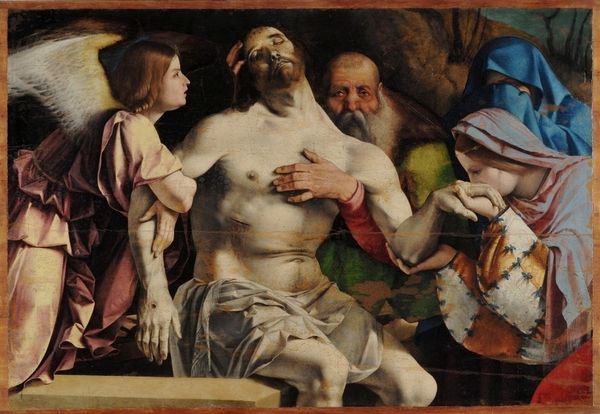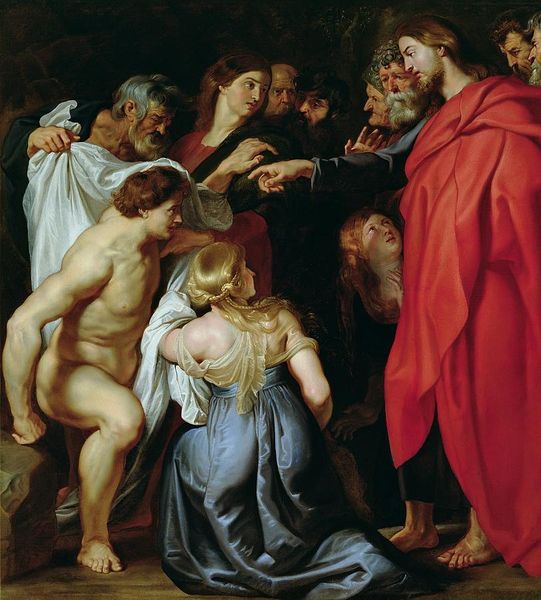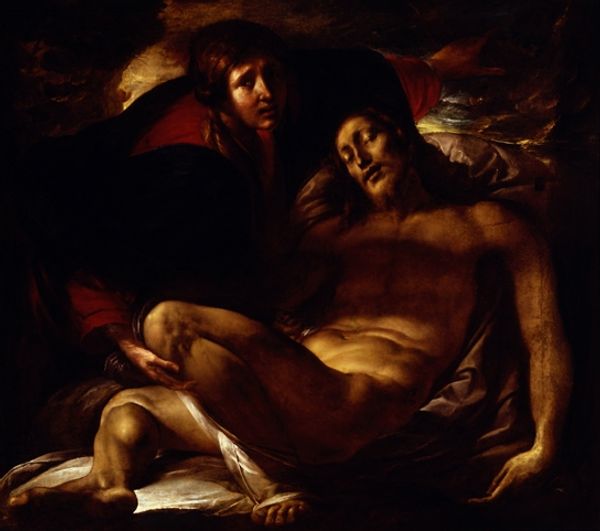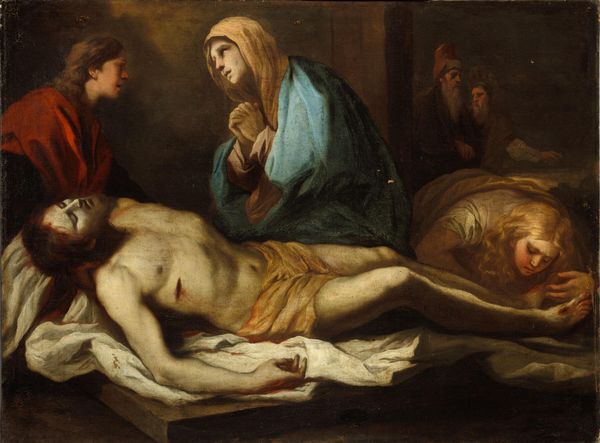
oil-paint
#
allegory
#
baroque
#
oil-paint
#
figuration
#
roman-mythology
#
mythology
#
human
#
history-painting
#
nude
Copyright: Public domain
Editor: Jacob Jordaens' "Marsyas Flayed by Apollo," an oil painting from around 1625, is certainly… intense. The graphic nature of the scene is hard to ignore. What strikes you most about this piece? Curator: I’m immediately drawn to the sheer labor involved in creating this scene, and what it communicates about early modern workshops. Oil paint wasn't squeezed from a tube then. Pigments had to be ground, mixed with oils…a real collaborative process. Can you imagine the investment required to render flesh so realistically, to capture the glint of metal? The whole premise reeks of status and the glorification of violence. What was its purpose? Editor: I see what you mean about the glorification angle. Is that purely tied to class? Curator: Class is central. But consider the availability of materials, the specific skills needed. Jordaens is showcasing artistic and material privilege. This is not just mythological; it's about asserting power through art itself. The brushstrokes, the pigment choices…every decision reflects available resources and control over them. Where was this artwork made? Editor: The museum catalogue just says private collection. Curator: That reinforces it for me. I'd want to know much more about where and for whom it was produced before drawing more conclusions. Editor: That makes sense. I guess I was focused on the "art," rather than the *making* of the "art." Thinking about production shifts my perspective quite a bit. Thanks! Curator: Exactly! Thinking materially is always a good way to move past first impressions to ask new questions.
Comments
No comments
Be the first to comment and join the conversation on the ultimate creative platform.

